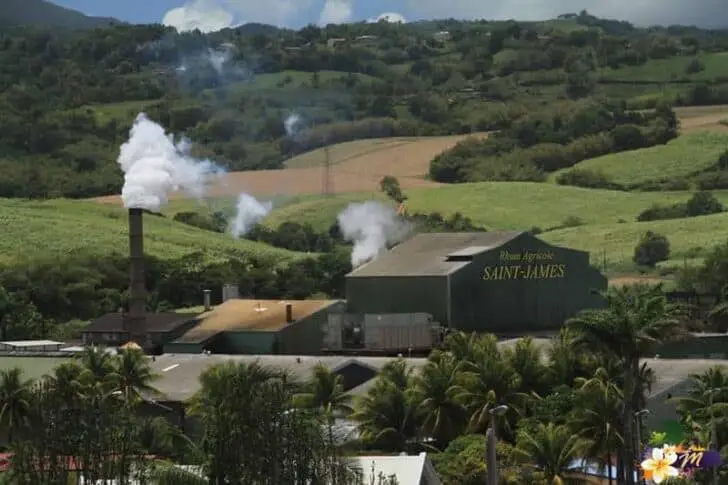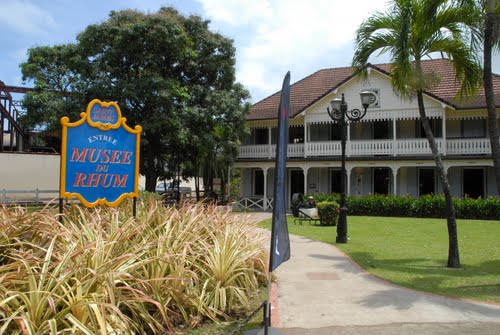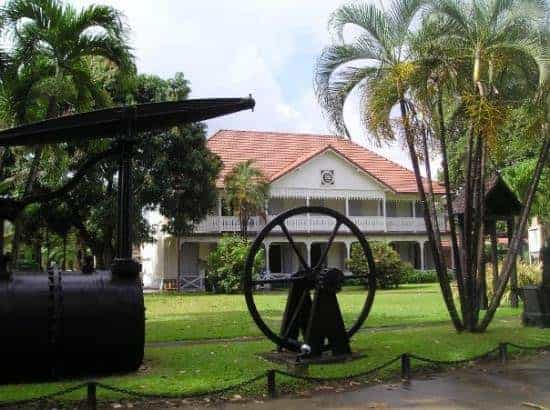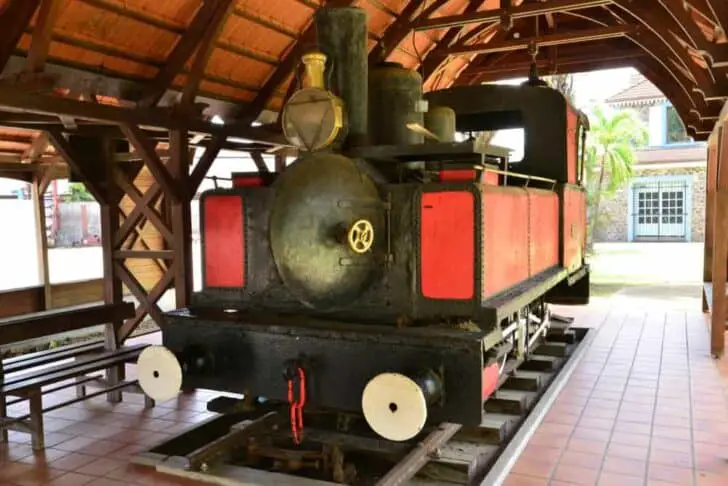The Saint James distillery is located in the heart of the town of Sainte Marie on the North Atlantic coast. This is a “steaming” distillery, ie it is still in operation during the sugar cane harvest period from about mid-February to the end of June.
The estate is large and includes, besides the factory and the large sugar cane fields, a rum museum, which occupies the two floors of a beautiful house dating from 1875, as well as a section of railway covered by The train of the plantations – An authentic steam locomotive of 1925. The history of the house Saint James is chaotic at least: It was indeed in origin, in 1765, installed on the heights of Saint Pierre on the Caribbean coast!
In 1902, when the whole of the town of Saint-Pierre was razed by the eruption of Mount Pelee, the distillery, partially affected, escaped devastation and resumed its activities after a few months. After the bankruptcy of the owner, the installations were bought and transferred in 1974 to Sainte Marie.
Table of Contents
The birth of the Saint James brand
In 1763, despite strong French protectionism, King Louis XV gave Martinique the right to export its rum.
At the time, the only country able to buy it was New England, that is, the United States of today.
In order to facilitate the sale, it is decided in 1765 that this rum would be called “Saint James”, name strong Anglo-Saxon consonance of a prestigious family of the British kingdom.
Saint James, the square bottle
Visionary, the Saint James brand is deposited in 1882, as well as the famous square bottle, the first in the world. Designed specifically to be stored rationally in the hold of the vessels, this allows reducing the breakage during the great storms.
The first vintage in the history of Martinique rum
In 1885, Saint James launched an exceptional rum, the first of its kind, the beginning of a long series of extraordinary vintages. Saint James relies very early on advertising and the brand is distributed in many forms: posters, multilingual illustrated flyers, postcards. The success of Saint James rums is very rapid and their notoriety increases throughout the 20th century.
The rum that survived the catastrophe of Saint-Pierre
On May 8, 1902, the eruption of Mount Pelee annihilated the city of Saint-Pierre and the Saint James site. By a miracle, the Habitation Saint James is only partially destroyed.
In 1974, all the production was centralized on one and the same site in Sainte-Marie, in the immediate vicinity of the plantations of sugar cane, on a rich soil and well exposed to the sun.
Inauguration of the new site in Sainte-Marie
December 23, 1974: Jacques Chirac, Prime Minister of Valéry Giscard d’Estaing, accompanied by the Minister of Agriculture, travels to preside over the inauguration of the new aging cellars and the 250 hectares of sugar cane that the plantations own Saint James.
The Saint James distillery today
The Saint James distillery is a distillery that “smokes” which means it is still in operation. The Saint James plantations stretch over 300 hectares in total, of which 275 are in full ownership, all around the distillery, and produce more than three million liters a year.
The canes are planted on the eastern slope of Montagne Pelée. Rare and exceptional in quality, they benefit from a privileged geographical and geological situation: a volcanic soil creating a fertile soil, a high level of sunshine and a tropical humid climate swept by the spray of the Atlantic Ocean.




